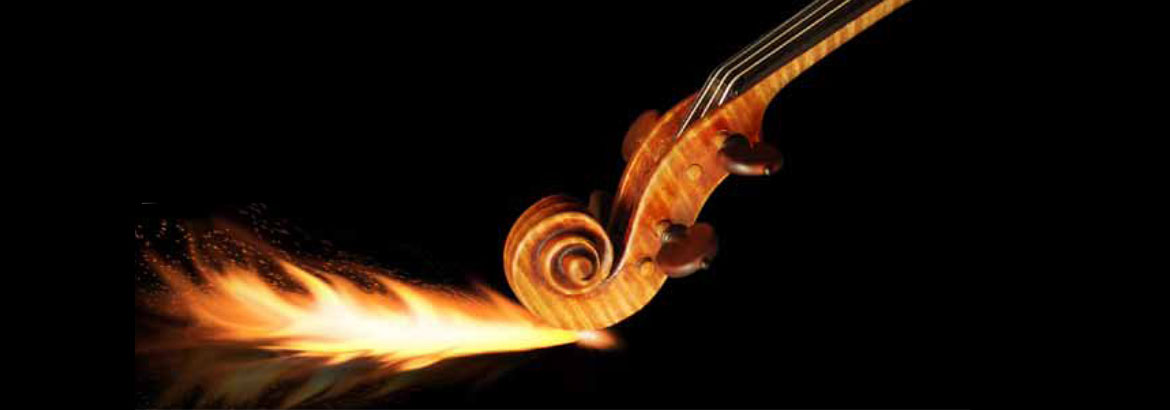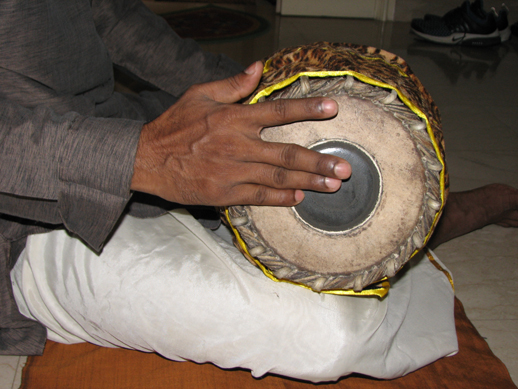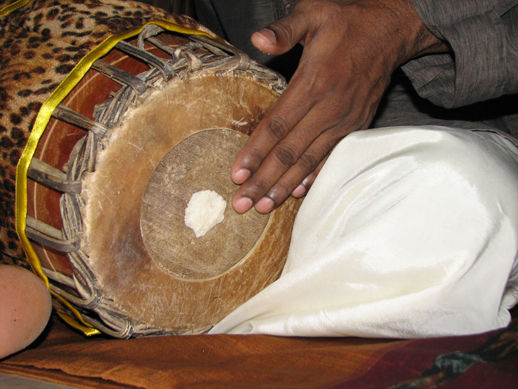Many other strokes are also taught as the training becomes more advanced, which are generally used as aesthetic embellishments while playing. These notes include gumki (or gamakam), and chaapu. The combination of these finger strokes produces complex mathematical patterns that have both aesthetic and theoretical appeal. Increasingly complex calculations (kanakku) and metres (nadais) may be employed when the mridangam is played.
- Ta: A sharp flat note played with the index finger in the middle of the black portion on the right side of the mridangam.
- Gumukki: Bass tone produced by playing on the inner layer of the lower end of the left hand side. Sound is produced only when there is a special applied paste.
- Full Chapu: It is a vibrating tone played with the small finger on the right hand side, between the black patch and the outer layer. The sound is tuned to the tonic of the tambura.
- Ara Chapu: A note similar to Chapu, but is an octave higher, and is played with the side of the hand and less of the pinky.
- Dheem: A vibrational tone version of Thi
Classically, training is by dharmic apprenticeship and includes both the yoga of drum construction and an emphasis on the internal discipline of voicing mridangam tone and rhythm both syllabically and linguistically, in accordance with Rigveda, more than on mere performance.



